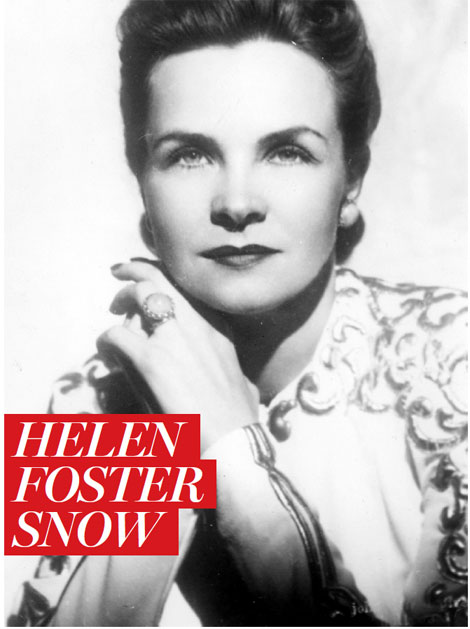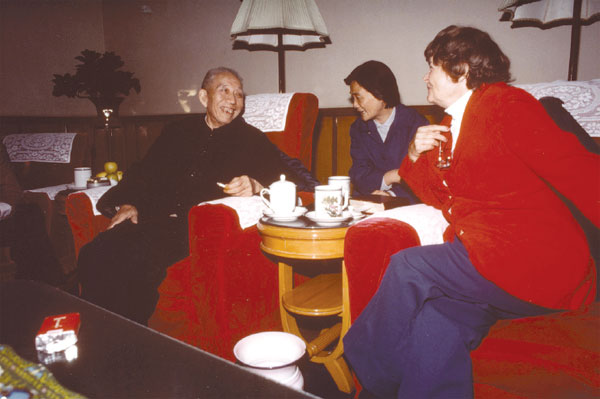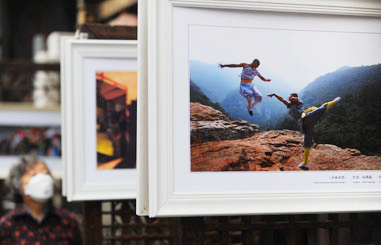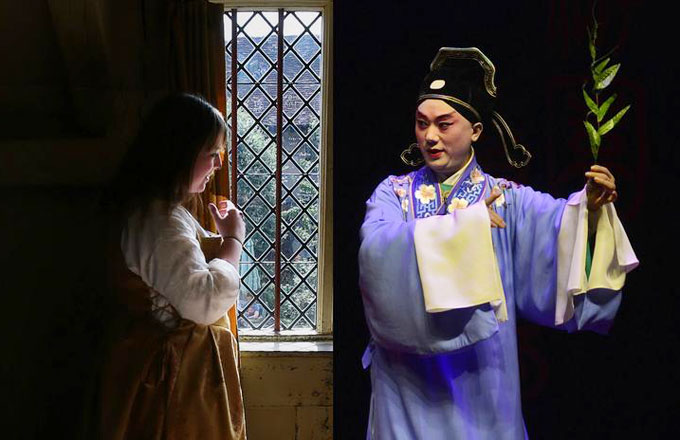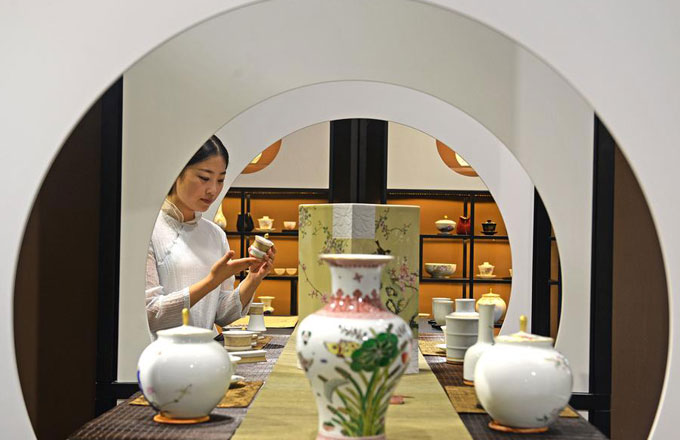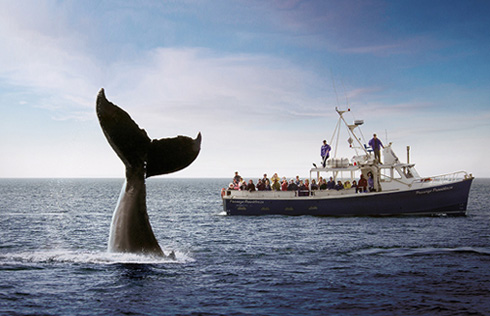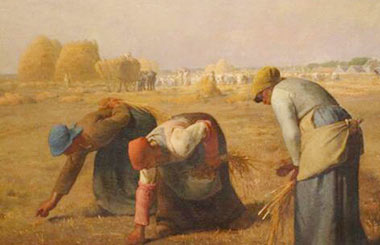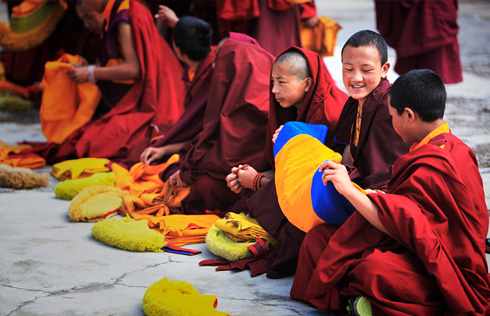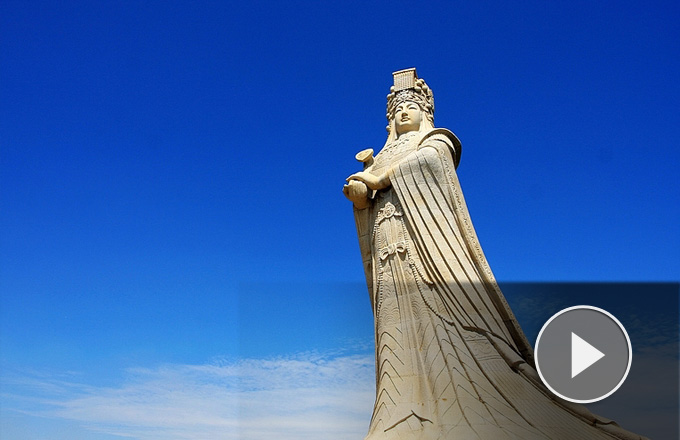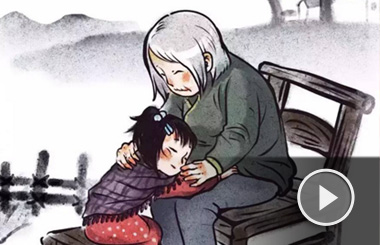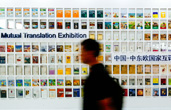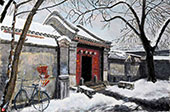Remembering a remarkable woman
Compared with Edgar Snow, the Chinese know very little about this beautiful, passionate and brave woman. However, symposiums held in Xi'an and Beijing recently aimed to remedy that
At midnight on April 30, 1937, a beautiful American woman, 30, secretly jumped out the window of her room on the first floor of the Xijing Hotel in Xi'an, the capital of Northwest China's Shaanxi province.
Stopping by the wall facing the window, she stepped on the garbage pile and tried to climb over the wall. But as she looked over the wall she saw a Kuomintang patrol marching toward it.
It was impossible to climb the wall so she walked to the entrance of the hotel and was surprised to find the door unlocked.

|
From top left: Ed and Helen Snow were married in Tokyo, 1932; Facing Danger in Shanghai, article in a Salt Lake City, Utah paper, 1932; Ed asked Helen to fetch from a studio a developed photo of Mao Zedong; photographer J.A. Piver asked to photograph Helen. He then put her picture in his window, since it looks like Joan Bennett. Photos Provided to China Daily |
Pushing open the door, she found a policeman leaning against the wall, dozing off.
He mumbled "Where are you going", and calmly she answered in Chinese that she was going home and wondered whether there was a rickshaw available.
Coincidentally, a rickshaw pulled by a man appeared.
Stepping into it, she left immediately.
Six days had passed since the 30-year-old woman from Peking had arrived in Xi'an.
She had been trying to find a chance to leave the city and go to her destination, but failed because she was closely watched by the Kuomintang police because of her husband, a world-famous journalist and writer.
Soon after she left the hotel, a man on a bicycle almost crashed into the rickshaw.
It was American Kempton Fitch, the son of George Fitch, the head of the Young Men's Christian Association in China, one of Madame Chang Kai-shek's best friends.
As planned earlier, the woman was supposed to meet him after climbing the wall.
Fitch then took her to his car, where they remained until dawn.
Then, disguised as a severely ill son of a missionary, the woman, escorted by Fitch, escaped the Kuomintang soldiers and reached Sanyuan Town, which separated the Red (the Communist Party of China) and White (the Kuomintang) regions.
There, two young Red Army soldiers came to meet them.
Later that day, a new American car was sent to pick up the woman and take her to Yan'an, where she was going to meet Mao Zedong, Zhou Enlai, Zhu De, Liu Bocheng, Peng Dehuai and officials, soldiers and common people in Red China.
It was probably one of the most thrilling days for American journalist and writer Helen Foster Snow, who later wrote books about her adventure in Northwest China, including Inside Red China, published under the pen name Nym Wales, which was regarded as a sequel to Red Star Over China by her husband Edgar Snow.
In 1936, Edgar went to Yan'an and interviewed CPC officials. With his news reports and the book Red Star Over China published in London in 1937, Edgar became the first to introduce Mao Zedong and Red China to the world.
His news reports and book had such great impact that Helen told Mao when she arrived in Yan'an a year later that the portrait of Mao, the legendary head of the "Red Bandits", by Edgar, shocked the world and Chang Kai-shek.
"Snow put a human face to the CPC and introduced the CPC leadership to an international and domestic Chinese audience," said John James Kennedy, professor at the University of Kansas.
The Snows sympathized with the Chinese people, and both of them tried to take an objective stand.
Through their diligent and professional work, the world got to know the leaders of the CPC. Then, many young Chinese, after reading the books, left home and went to Yan'an, to join in the cause to build a new China.
Now, as the wheels of history roll on, many figures, even great ones and those who were worshipped in their lifetimes, are gradually forgotten and recede into the depths of human memory.
However, the Chinese traditionally always try to remember those who offered their hand to the county in difficult times.
American journalist and writer Helen Foster Snow is one of them.
Compared with Edgar Snow, the Chinese know very little about this beautiful, passionate and brave woman.
However, in recent years, people started paying more attention to her, specially through the symposiums held in Xi'an and Beijing recently.
Helen, who arrived in China in 1931, always cared about the country.
As Paul Hyer, professor of Chinese history at Brigham Young University, said: "In the bittersweet relations between China and America, the bridging work of a few Americans stand out. One of these was Utah's Helen Foster Snow."
Helen was born into a family of intellectuals in Cedar City in Utah in 1907.
"From her active, civic minded, self-reliant, mother (Hannah David Foster), "Helen learned many things," wrote Hyer in the introduction to the book Bridging: The Life of Helen Foster Snow.
For instance, her mother, as a young lady, planned and built a small house in the pioneering period of southern Idaho. She was also a supporter of women's suffrage.
Since eight when she read The Wizard of Oz, Helen had wanted to become a writer.
At the age of 15, she published her first poem "Li'l Ph'losophy on th' Spring".
In An Interview with Myself, Helen wrote: "I had read Edith Wharton, who said that you have to stay abroad in a foreign country to get perspective before you can write about your own American experience. The contrast is what energizes your brain and talent ... Nearly all Americans went to Paris." But compared with Paris, "China had more contrast and greater exchange to the dollar."
Off to China
So in July 1931, she left Seattle for Shanghai taking the American Mail Line ship, President Lincoln.
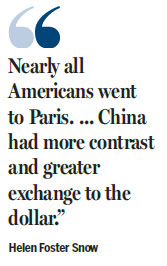
Then, when she was working the Consulate General of the United States in Shanghai as a secretary, Helen asked about the American correspondent Edgar Snow, whom she admired greatly through reading a lot of his reports about China.
They soon met and fell in love, and Edgar then showed Helen around China.
In Shanghai, they witnessed the "worst typhoon in years", the refugees rushing to Shanghai after that, and epidemics followed suite, aggravated by famine and Japanese invasion.
They took photos and wrote news reports for Western media to present the truth of China.
At that time, many news reports were about the easy life that most Western people enjoyed in the concessions, regardless of the misery of the Chinese people.
After getting married at Christmas in 1932, the couple moved to Peking as Edgar got a job there. In Peking, as it was then known, with their love for China and their humanitarian streak, they helped students who, despite the Kuomintang's suppression, sought the right to fight against Japanese aggression, during the December 9th Movement in 1935.
Helen wrote stories about these movements and published a series of reports in Millard's Review for about six months.
She also wrote articles for the Daily Herald about these students' movements.
Then, in 1936, Edgar learned that he might be able to enter Northern Shaanxi to see the Red China.
Encouraged by Helen, he went there, and obtained first-hand material about a different China that had not yet been revealed to the world.
As Helen put it, she was a truth seeker, trying to find the truth of history, and the adventure in Northwest China was the turning point of her life.
Letter from Yan'an
When Edgar was still in Yan'an in August 1936, he wrote a letter to Helen in Peking, which kindled his wife's passion to visit the place.
That year, the Japanese army was speeding up its invasion in China, but the Kuomintang was still concentrating its efforts on exterminating the "Red Bandits".
The Snows, having seen the misery the Chinese had suffered due to the invasion, sympathized with the country and were worried about its future.
Reading what her husband had seen and heard in Yan'an in his coded letter in September 1936, Helen, a passionate and adventurous woman, then immediately decided to go to meet Edgar there.
But it was harder for her to get into Yan'an than Ed did in 1936.
Helen arrived in Xi'an in late September. It was two months before the "Xi'an Incident", and the Generallissimo Chiang Kai-shek was preparing to launch another military offensive against "Red Bandits" in Northern Shaanxi.
Although she was unable to go to Yan'an, Helen got a chance to interview Zhang Xueliang, Chiang Kai-shek's deputy commander-in-chief, publishing the scoop in the Daily Herald in London that foretold the "Xi'an Incident" 70 days later, in which Zhang and General Yang Hucheng, pacification commissioner of Shaanxi province, captured Chiang Kai-shek in Xi'an to force him to stop the war against the CPC and unite the Chinese to fight the Japanese aggression.
In late October 1936, Edgar completed more than three months of interviews in Yan'an and returned to Peking.
Helen then started helping him to sort out the material, type out the notes of the interviews and print the photos that Edgar had shot in Northern Shaanxi.
At her suggestion, Edgar did not rewrite the portrait of Mao Zedong in his own words. Instead, he kept Mao's first-person account, making it a classic.
In early April 1937, when Edgar was still working on Red Star Over China, Helen learned that the CPC would hold a representative conference in Yan'an, and communist members from around China would gather there, which she regarded a great opportunity to go to the Red area.
In late April, she arrived in Xi'an again, seeking a chance to enter Northern Shaanxi. By that time, her husband was world-famous thanks to his exclusive reports on Yan'an.
Helen was closely watched by the Kuomintang police. She tried several ways to get away but failed.
In the end, she jumped out the window of her hotel room at midnight and joined her American friend Fitch.
Helen then made her way to Yan'an, and interviewed many CPC officials that her husband had not had a chance to meet, including Zhu De, who led the Second and Fourth fronts of the Red Army on the Long March and had arrived in Yan'an later.
She took photos and collected material not only for her own books like Inside Red China, but to provide supplements to Edgar's Red Star Over China, such as the section about Zhu De.
War years
After their adventures in Northwest China, the couple left Peking after it was occupied by the Japanese army for Shanghai.
But in late 1937, Helen was watching from the deck of the S.S. President Lincoln as Shanghai was burned by the Japanese.
At least 80 percent of Shanghai's factories and workshops had been destroyed or expropriated by the Japanese.
There were crowds of refugees suffering all kinds of diseases and in rags, said Gary Hansen, a professor from Utah State University, in a speech in 1996.
It was at the Medhurst Apartments in Shanghai, the Snows and their friend Rewi Alley initiated the idea of industrial cooperatives.
"While seeking a way to help these people, Helen found the answer during a dinner-table discussion in early 1938," he said.
Alley recalled in China Remembers Edgar Snow that Helen said: "There must be a people's movement for production. ... Industrial cooperatives are the answer!"
In the following seven years, under extremely difficult conditions, nearly 2,000 industrial cooperatives employing over 300,000 people were systematically organized in China, said Hansen.
At the end of 1940 and the beginning of 1941, the Snows left Shanghai for America. In 1949, they divorced. Edgar died in 1972.
The most unique person
During 1972 and 1973, to finance a trip around the world, including China, Helen sold many of her antiques and memorabilia. But in order to maintain her independence and credibility, she never took any financial support for her trips to China.
In 1978, joined by a film crew from Hollywood, Helen started a documentary project to revisit the places that she had been to more than 40 years earlier.
"Helen Snow is the most unique person that I ever met in my life," said Tim Considine, producer of the film crew.
He has been recently visiting China to attend symposiums about the Snows in Xi'an and Beijing, to tell stories about his trip with Helen to China in 1978.
"She was so beautiful, lively, passionate, and talented," he said.
Considine accompanied Helen to meet Deng Xiaoping in 1979 when the leader visited the US.
"In the US, no one knew her. But in China people really cared about her. I saw her flower bloom in China. People and the leaders like Deng Xiaoping were kind to her. I was happy to see her come to life, happy in China," he said.
Based on the trips, she wrote and published An American Experience in China in Xi'an.
In 1984, her book My China Years was published in New York.
She continued to tell stories about China to the Western world.
Helen died in 1997.
"She will always be remembered for her profound love for the Chinese people, her understanding of China's history, and her lifelong dedication and significant contribution to promoting friendship and understanding between our two peoples. In these respects she was an early bridge-builder and role model for younger generations.
"Her name will go down in the annals of Sino-US friendship and will always live in our hearts," said former vice-premier Huang Hua, his wife He Liliang and colleagues of the China Society for People's Friendship Societies, in a tribute to her.
In Cedar City, Utah, her hometown, a bronze statue of Helen Snow has been put up to remember a remarkable woman.
yangyangs@chinadaily.com.cn

|
From left: Helen, picture taken on eve of marriage; Helen with Zhu De, 1937; Helen interviewing the Mayor of Shanghai, Wu Tiecheng (right), at the outbreak of January 28 Incident; Ed's famous photo of Mao Zedong in Bao'an, 1936. |
|
Helen meeting the then vice-premier Wang Zhen in Xi'an, 1978. |
|
From left: Inside Red China, 1939; Red Star Over China, 1938; My China Years, 1984; My China Years, Chinese version; Inside Red China, hardcover. Photos Provided to China Daily |
(China Daily 10/22/2016 page13)


